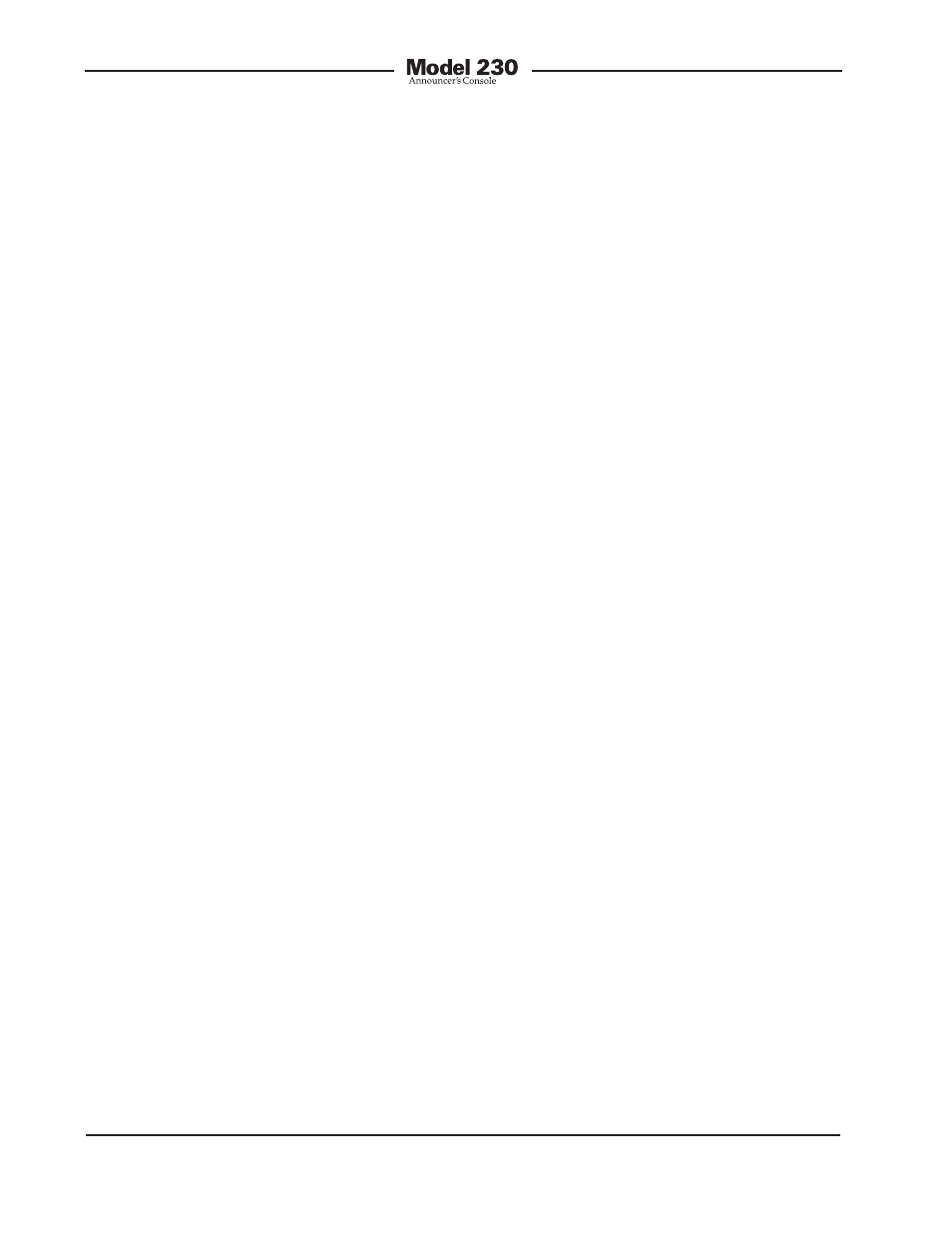Symptoms of insufficient power – Studio Technologies 230 2014 User Manual
Page 38

Issue 9, November 2014
Model 230 User Guide
Page 38
Studio Technologies, Inc.
Symptoms of Insufficient
Power
A core part of the Model 230’s internal cir-
cuitry is a switch-mode power supply that
produces +45 volts, +12 volts, +5 volts,
and –12 volts. This power supply circuit
works very well as long as it is “fed” with
sufficient input voltage and current. “Suf-
ficient” is defined as a minimum of 24 volts
on the IFB input and 20 volts on the exter-
nal 24 volt DC input. The necessary cur-
rent, 125 milliamperes for the IFB circuit
and intercom line and 90 milliamperes for
the external source, must be supplied over
their respective voltage ranges.
It’s worth discussing what will happen if
any of these power sources fall below their
specified minimum. Typically, if the Model
230 is being powered by an external 24
volt nominal power source, normal opera-
tion will continue until the input falls to
the 18-20 volt range. As the input voltage
drops below this range the Model 230’s
internal power supply will have reduced
stability, operating in this manner until its
low-voltage shutdown circuit halts opera-
tion. Note that as the input voltage moves
down from 24 volts the input current will
rise proportionately to make up for the
loss of power.
Using the intercom line to provide Model
230 power shouldn’t prove to be a prob-
lem. Power supplies associated with
broadcast and production intercom sys-
tems are designed to support multiple
beltpack and related devices. In the “big
scheme of things,” connecting a Model
230 shouldn’t add a significant load.
If an IFB circuit is powering the Model 230,
maintaining the required voltage and cur-
rent is more critical. Should the voltage or
current fall below the specified minimum,
the Model 230’s power supply circuit will
again become unstable. This will become
an issue as noise will be induced into the
IFB circuit’s audio signals. The reason
is simple: an IFB circuit “multiplexes”
3-conductors so that they carry both power
and audio signals. If sufficient amounts
of voltage and current are supplied to the
Model 230’s IFB input, the Model 230’s
power supply will draw a steady amount of
energy. This will not disturb the analog sig-
nals on pin 1 (common for DC and audio)
and pin 2 (DC and channel 1 audio). But if
the Model 230’s power supply is not sup-
plied with sufficient energy (volts multiplied
by amps) it will try to draw what it needs
from the IFB circuit, becoming unstable
in the process. The IFB circuit’s audio
signals will be corrupted by the power
supply’s attempt to draw enough power.
Instead of nice clean audio there will be
squeaks, squeals, and some awfully funky
noises added. Again, in a low-voltage
or low-current situation, no damage will
be done to the Model 230’s circuitry but
correct operation will not be possible.
In most cases maintaining the IFB circuit’s
required voltage and current shouldn’t be
a problem. But issues may arise due to
malfunctioning IFB circuit sources or poor
interconnect cabling. Typically, excessive
cable length won’t be the cause of a prob-
lem. Generally, problems will be caused
by broken or damaged connector pins,
dirty patch points, or damaged (partially
open) cable conductors. Measuring the IFB
circuit’s voltage and current draw directly
at the Model 230’s IFB input connector will
quickly identify if there’s a power issue.
And now for another shameless “plug” for
other Studio Technologies products: Frank-
ly, most devices that supply IFB circuits
for broadcast applications use outdated
